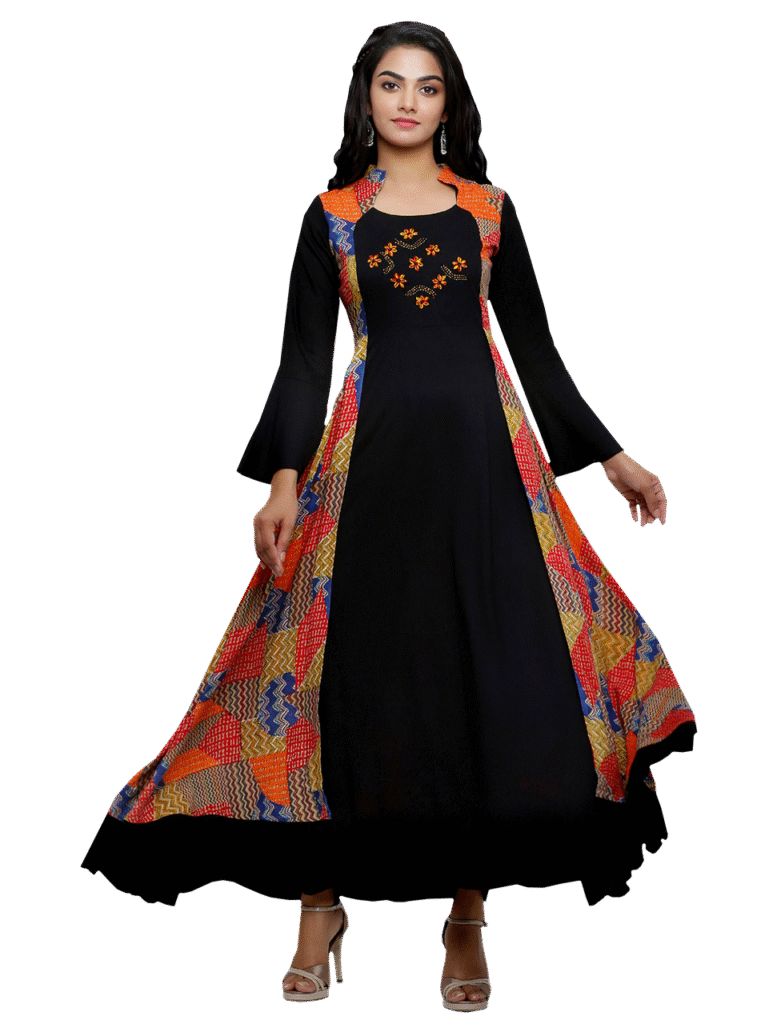Indian fashion is a vibrant mix of traditional styles, regional variations, and modern interpretations, heavily influenced by its rich history and cultural diversity. From ancient times to the present day, clothing has reflected India’s traditions, artistry, and evolving social dynamics. The fashion industry in India is now a global force, known for its exquisite craftsmanship, unique fusion of East and West, and sustainable practices.
Key Aspects of Indian Fashion:
- Traditional Wear:Sarees, lehengas, ghagra choli, salwar kameez, and kurtis are iconic pieces of Indian fashion, each with its own unique style and regional variations.
- Textile Heritage:India is renowned for its exquisite textiles, including silk, cotton, and handloom fabrics, often adorned with intricate embroidery, prints, and embellishments.
- Indo-Western Fusion:The influence of Western styles on Indian fashion has led to the creation of innovative Indo-Western ensembles, combining traditional elements with modern silhouettes.
- Regional Diversity:Fashion styles vary greatly across different regions of India, reflecting the country’s diverse cultural heritage.
- Modern Trends:Contemporary Indian fashion incorporates minimalist designs, sustainable materials, and bold prints, while still honoring traditional craftsmanship.
- Global Influence:Indian fashion has had a significant impact on international runways, with designers drawing inspiration from its rich textile heritage and traditional styles.
- Sustainable Practices:There is a growing emphasis on sustainable and eco-friendly fashion in India, with designers exploring innovative ways to reduce waste and promote responsible production.
Examples of Indian Fashion Styles:
- Saree:A long piece of fabric draped in various styles, worn for special occasions and everyday wear.
- Lehenga Choli:A long, skirt-like garment (lehenga) paired with a fitted blouse (choli), often worn for weddings and festive events.
- Ghagra Choli:Similar to lehenga choli, but with a more flowing and elaborate skirt, often worn for weddings and celebrations.
- Salwar Kameez:A comfortable and versatile outfit consisting of a long tunic (kameez) worn over wide-legged pants (salwar), popular for casual wear.
- Kurti:A short or mid-length tunic, often worn over leggings or jeans, popular for everyday wear.
Evolution of Indian Fashion:
- Ancient Times:Evidence of clothing and textile production in India dates back to ancient civilizations, with artifacts showing various styles and fabrics.
- Mughal Era:The Mughal Empire brought luxurious fabrics and intricate embroidery techniques to Indian fashion, influencing the styles of the nobility.
- British Raj:Western styles like blouses, trousers, and skirts were introduced during the British period, gradually influencing Indian fashion.
- Post-Independence:The Indian fashion industry gradually developed, with companies like Abu Jani, Sandeep Khosla, and Tarun Tahilani paving the way for fashion design as a profession.
- Bollywood’s Influence:Bollywood films have played a significant role in popularizing fashion trends and styles, drawing inspiration from film stars and introducing them to the public.


In Conclusion: Indian fashion is a dynamic and evolving landscape, characterized by its rich history, cultural diversity, and innovative designs. It continues to inspire global trends and is known for its exquisite craftsmanship and sustainable practices.